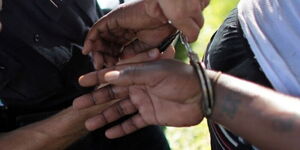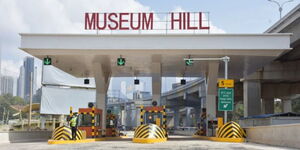The Kenya Revenue Authority reminded registered taxpayers on Tuesday that starting this January 2024, VAT return will be prefilled with their tax information available to KRA with the aim of simplifying the process of filing and improving user experience.
According to the tax authority, the objective of the auto-populated VAT return is to enhance VAT compliance and transparency in return declarations.
“Ensure VAT claims are validated through TIMS/eTIMS or customs declarations. Electronic tax invoices must be issued, and validity can be checked via QR code or control unit number on iTax Portal. Confirm the accuracy before submission as it's a self-assessment return.” KRA stated
Further, KRA advised registered VAT taxpayers to confirm the accuracy of the declaration before submitting the returns since the prefilled return is a self-assessment return as prescribed by the law.
Kenya Revenue Authority building at Times Towers
KENYANS.CO.KE
Below are 17 steps to follow in the process of filing VAT Return as stipulated by KRA.
First, you have to log into the iTax Portal and select the option for ‘File Return’ under the Returns menu.
Secondly, select the tax obligation ‘Value Added Tax (VAT)’ and then proceed to the next step of the filing process.
You will then click on the button ‘Download Auto populated VAT return’ as the third step and then proceed to click ‘Ok’ to download the pre-filled form.
Once the return zip file has been downloaded, open it to view the VAT return Excel template and the CSV files that are to be imported to the respective sheets of the VAT return as the fourth step.
You can then open the VAT return Excel template as the fifth step. It will have prefilled details under the basic information sheet (PIN, Type of Return, Entity Type, Tax Period), payment details and relevant tax due sheet details (credit b/f, WHVAT credits, Refund Claim Lodged, Credit Adjustment Voucher, Debit Adjustment Voucher where applicable).
It will also have prefilled values for section B General Rated Supplies, section D Zero Rated Supplies and Section E Exempt Supplies. The sales amount can be edited upwards to capture additional sales for the tax period where applicable.
As the sixth step Import the extracted CSV file for Section B for total sales and VAT to customers registered for VAT labelled ‘SEC_B_WITH_VAT_PIN1’
The generic description of goods/services can be edited to capture the actual description where applicable in the CSV. This should be saved and imported. Kindly note that the CSVfile labelled ‘SEC_B_WITHOUT_PIN_AND_NON-VAT_PIN1’ should not be imported.
The seventh step is to import the extracted CSV file for Section D1 for total sales and VAT to customers registered for VAT labelled ‘SEC_D1_WITH_VAT_PIN1.’ Kindly note that the CSV file labelled ‘SEC_D1_WITHOUT_PIN_AND_NON-VAT_PIN1’ should not be imported. The purpose of this CSV file is simply to verify the populated lump sum amount in sheet D of the VAT return and provide the taxpayer with visibility of the transactions made to customers not registered for VAT.
Afterwards, import the extracted CSV file for Section E for total sales and VAT to customers registered for VAT labelled ‘SEC_E_WITH_VAT_PIN1 as the eighth step. Kindly note that the CSV file labelled ‘SEC_E_WITHOUT_PIN_AND_NON-VAT_PIN1’ should not be imported.
In the ninth step, Import the extracted CSV file for Section F for total purchases and VAT from suppliers registered for VAT labelled ‘SEC_F_WITH_VAT_PIN1.
When importing the CSV file for sheet F where you have local, imports, and digital purchases (from non-residents without permanent establishment supplying digital services), you will be required to merge the three different types of purchases under sheet F (local purchases, imports and Digital purchases) CSV files where applicable into one.
You can open the local purchases CSV SEC_F_WITH_VAT_PIN1, then open the Imports and Digital Purchases CSVs and copy the respective transactions to the local purchases CSV, save it as total purchases for sheet F and import the CSV which will contain all your purchases at general rate. Analyse sheet F purchases CSVs to disallow any prohibited input tax.
The next step is to import the extracted CSV file for Section H for total purchases and VAT from suppliers registered for VAT labelled ‘SEC_H_WITH_VAT_PIN1.’ When importing the CSV file for Sheet H where you have both local purchases and imports which are zero-rated, you will be required to merge the two different types of purchase CSV files where applicable into one.
You can open the local purchases CSV SEC_H_WITH_VAT_PIN1, then open the Imports CSV and copy the respective transactions to the local purchases CSV, save it total purchases for sheet H and import the CSV which will contain all your purchases at zero rate.
The taxable value under sheet H can be edited downwards where applicable before importing the CSV or in the VAT return once imported. A purchase invoice in a CSV can be deleted/disallowed in full where applicable before importing the CSV.
In the next step, repeat the above processes for Purchases under sheet I for exempt purchases where applicable. Sheet I also allows you to capture all other local purchases from taxpayers where VAT was not incurred as a lump sum where applicable.
Taxpayers who have paid VAT on Imported Services in the tax period will be required to declare the details in sheet J of the VAT return. To the extent that part of the VAT on Imported Services paid is not an allowable deduction, the taxpayer should capture the disallowed component under row 16 or 17 of the tax due sheet.
Where the taxpayer has both taxable and exempt supplies, they will be required to disallow in full the input tax attributable to exempt supplies and apportion the common/shared input tax as provided under section 17(6) of the VAT Act 2013.
For the disallowed input tax attributable to exempt supplies, enter the input tax amount under row 16 of the tax due sheet if it had been claimed in full under sheets F and G where applicable. For the common/shared input tax incurred for both taxable and exempt supplies like stationery, utilities, rent, transport, computer hardware and software, repairs etc, enter their total input tax under row 17 of the tax due sheet if it had been claimed in full in sheet F and G where applicable. The return will calculate the deductible input tax after considering the above.
Once all the relevant CSV files have been imported, confirm you have captured all details, and the return has calculated the correct VAT due. Proceed to validate the VAT return.
Then proceed to upload the zip file from the documents folder, agree to the terms and click the ‘OK’ button to file the return.
Upon successful submission of the Value Added Tax (VAT) return, proceed to download the return receipt. A copy of the return receipt will be sent to your iTax registered email. The return receipt can be downloaded under the useful links menu through the following steps; Go to the consult and reprint acknowledgements receipts and certificates. Select business process as tax returns processing and sub-process as original filing. Select obligation and enter the return number (can be retrieved under the view filed return option under the returns menu). Consult and download the acknowledgement receipt.
Lastly, if the taxpayer is in a payable position, they will click on the payments button below the ‘download returns receipt’ link or proceed to the payments menu and follow the steps below; Select payment registration, click next and select tax head as VAT and Tax Sub Head as Value Added Tax. Select payment type as self-assessment, then the tax period and liability details for the tax period will populate. Click add, select mode of payment and submit.
After that, make payments through any of the agent banks, mobile money or debit and credit cards. For mobile money, the pay bill number is 222222 and the account number is the payment registration number – PRN. For payments by debit card, credit card or Mpesa Express Option/Web checkout, use the Make Payment Option under the payments menu or click on the payment option provided once you submit the PRN details and follow the steps provided.
A photo of Treasury Cabinet Secretary Njuguna Ndung'u speaking at a conference on August 10, 2023 (left) and KRA Revenue Assistants during their pass out parade on August 25, 2023 (right).
Photo
Treasury / KRA












